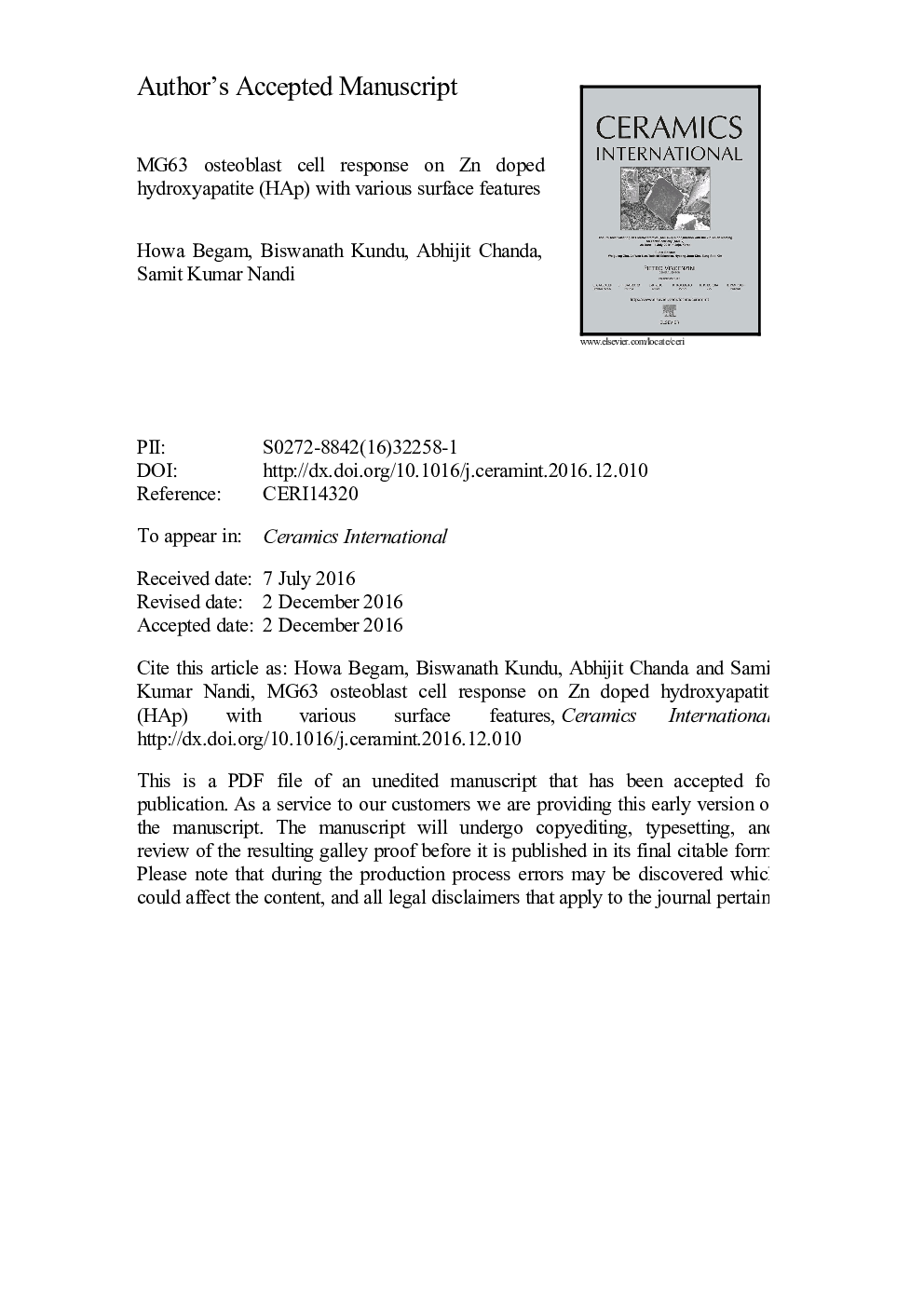| Article ID | Journal | Published Year | Pages | File Type |
|---|---|---|---|---|
| 5438929 | Ceramics International | 2017 | 26 Pages |
Abstract
The clinical success of implant is governed by implant-surface and bone cell interaction that promote osseointegration and long term stability. Calcium hydroxyapatite (HAp) is a widely used bioceramic material for orthopedic and dental applications, which promotes bone tissue generation. Doped hydroxyapatite using various metallic ions is often reported to enhance this osteoconductive property. The objective of this study was to synthesize zinc doped HAp, to investigate the osteoblast cell response on this doped HAp and find out separately the effect of doping and different surface parameters on cell response. Slip casting technique was used to prepare pure and doped HAp specimens which were sintered at 1100 °C and 1250 °C. Different porosities, pore sizes were generated along with different surface roughness so as to understand the effect of these extrinsic parameters on cell culture. MG63 osteoblast cells were used for a maximum period of two weeks. Metabolic activity, adhesion and proliferation rate study of osteoblast cells on doped HAp showed significantly better response than pure HAp. Effect of doping was found to be more prominent than the effect of surface roughness.
Related Topics
Physical Sciences and Engineering
Materials Science
Ceramics and Composites
Authors
Howa Begam, Biswanath Kundu, Abhijit Chanda, Samit Kumar Nandi,
